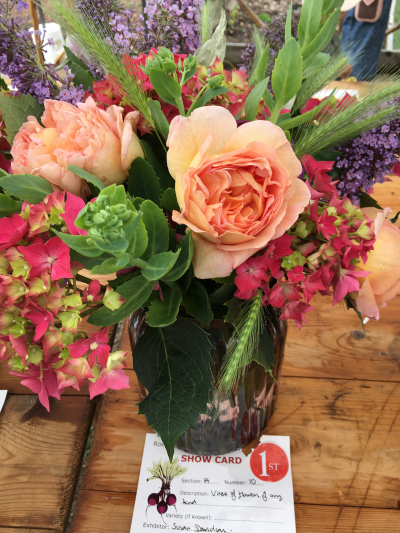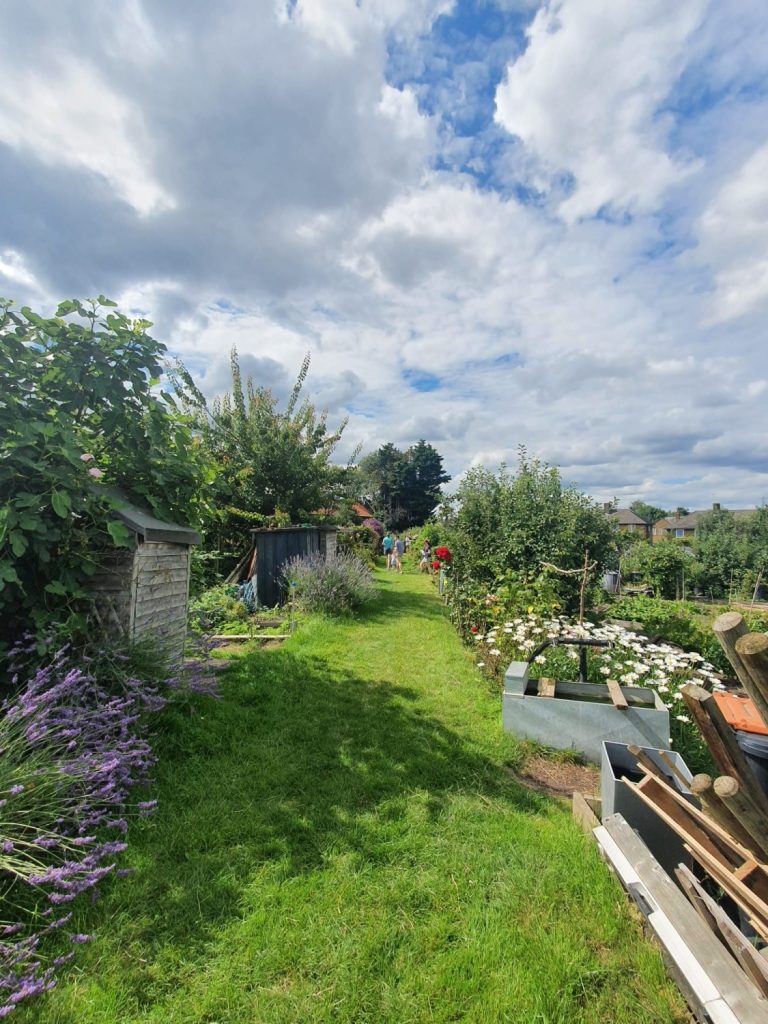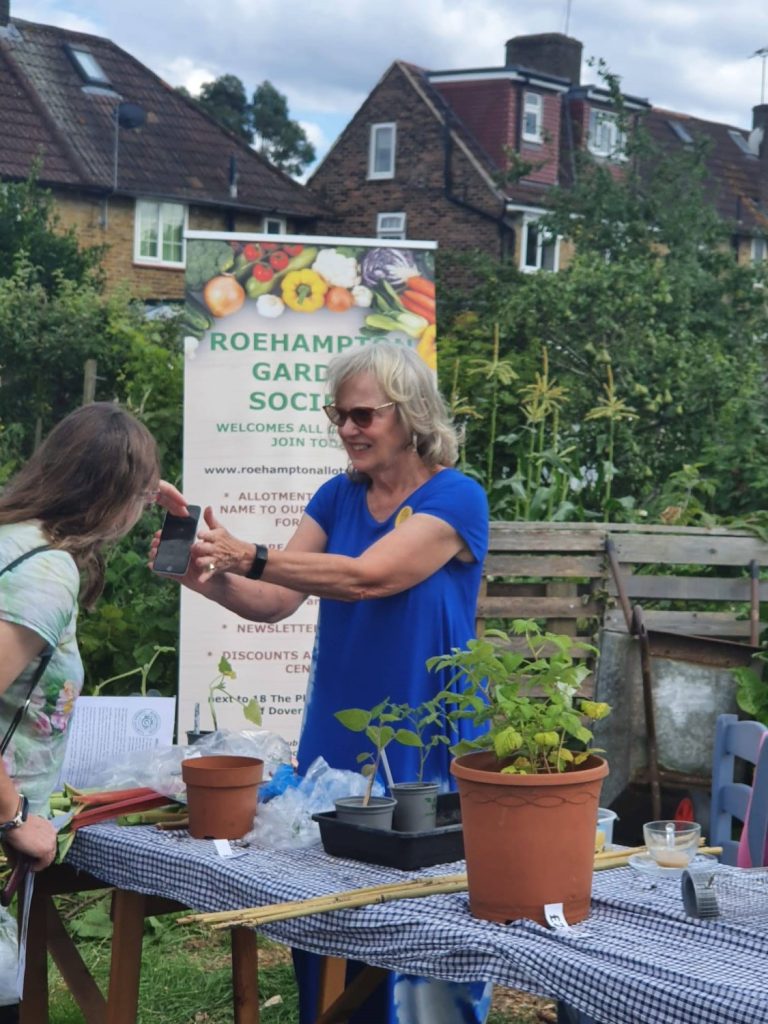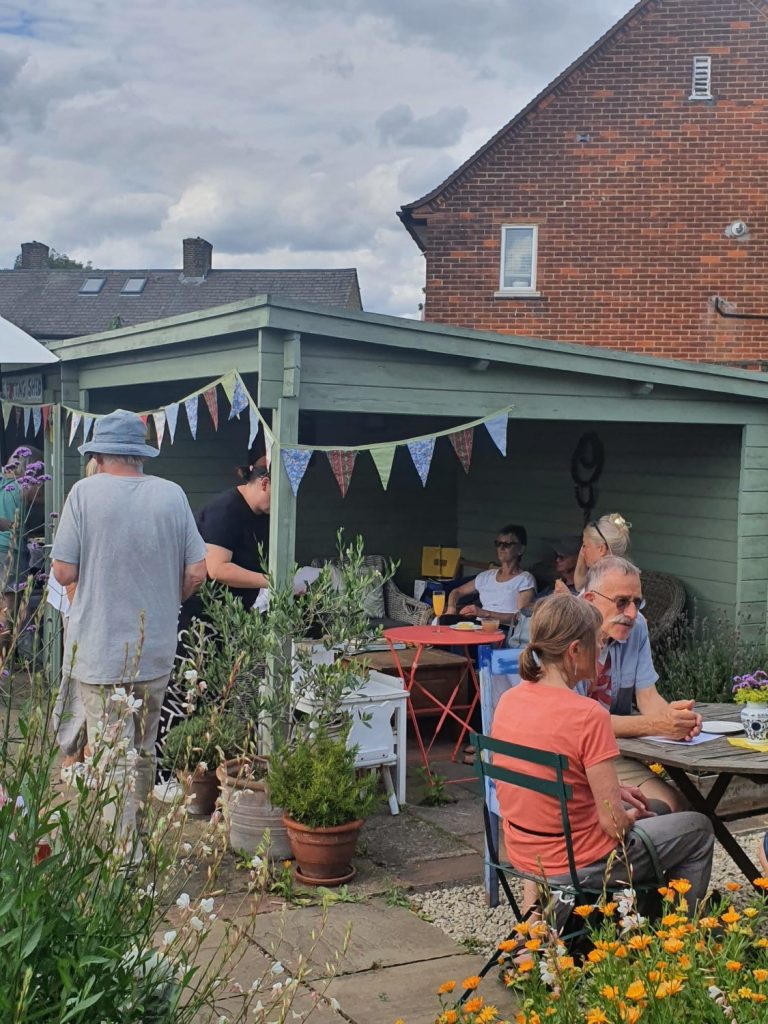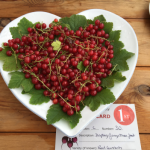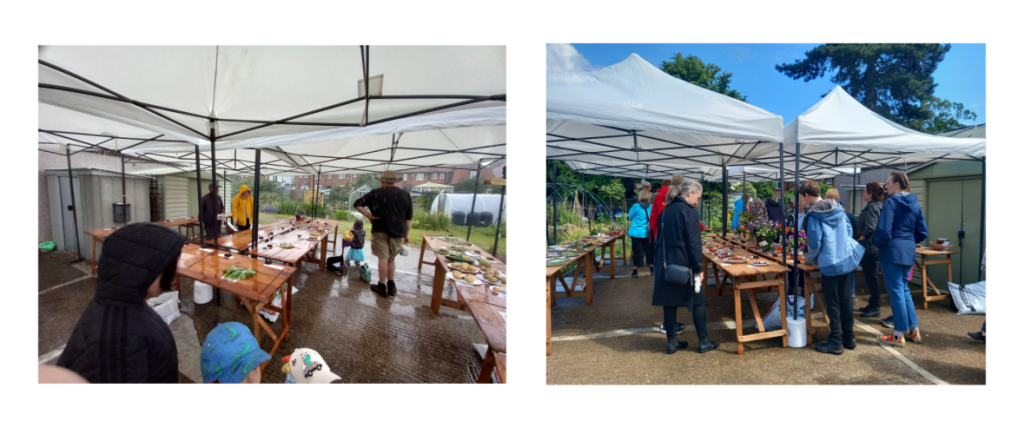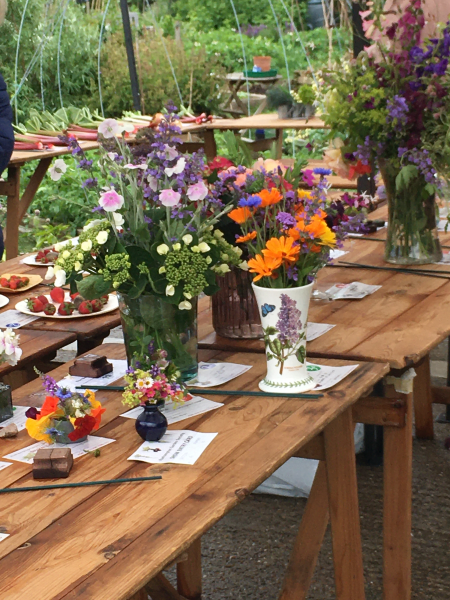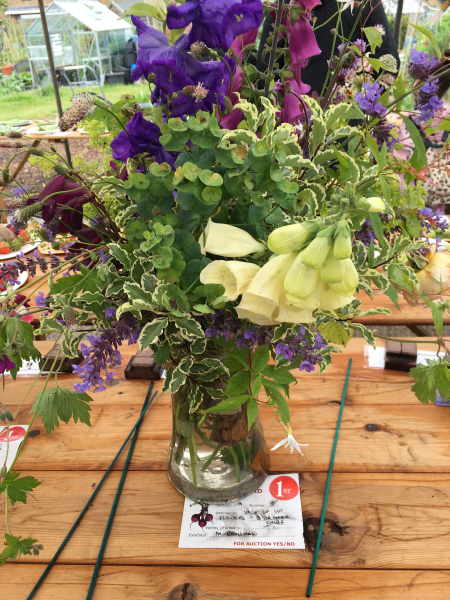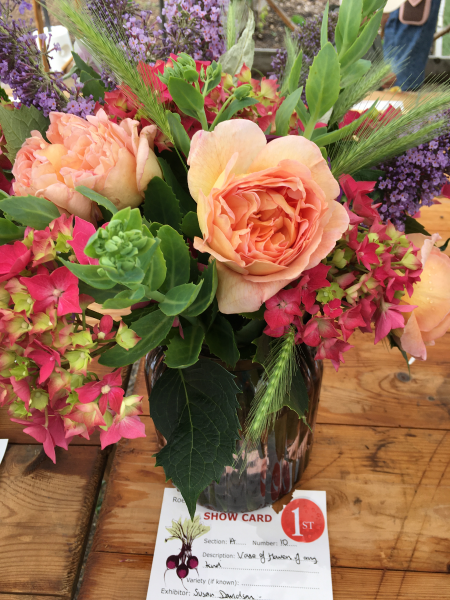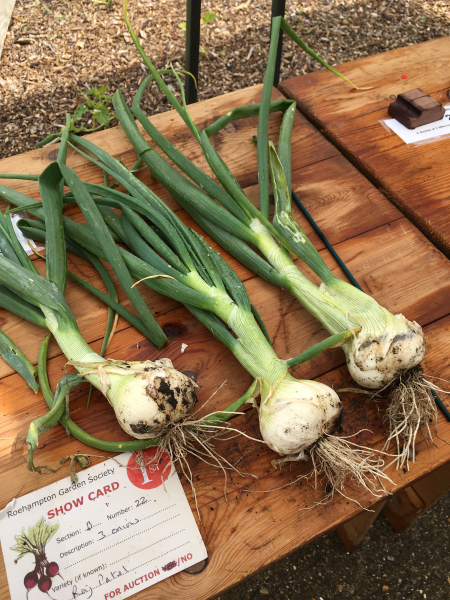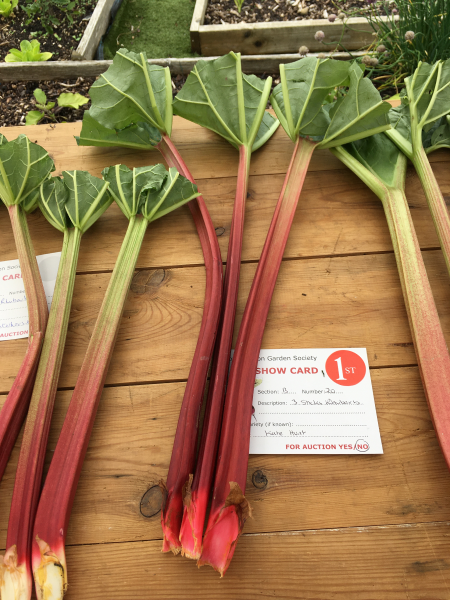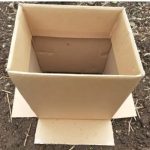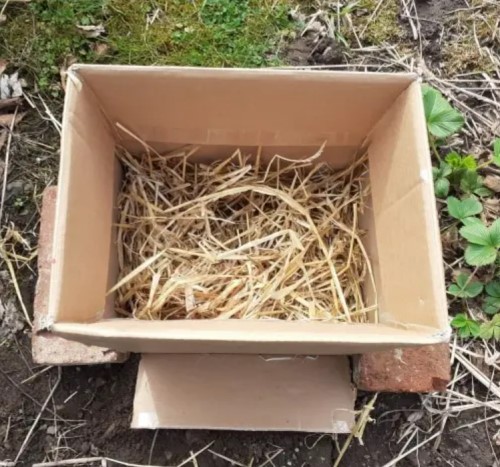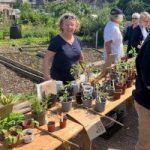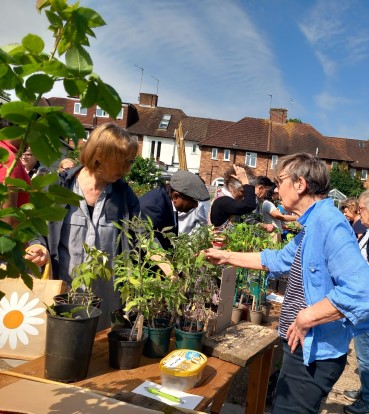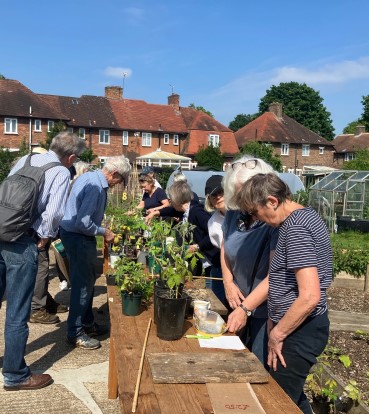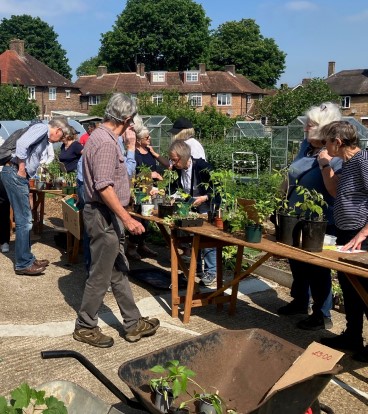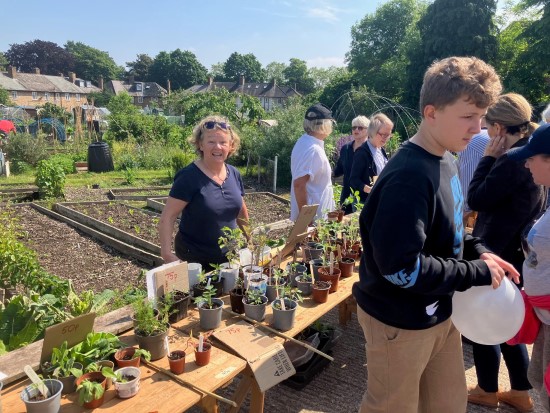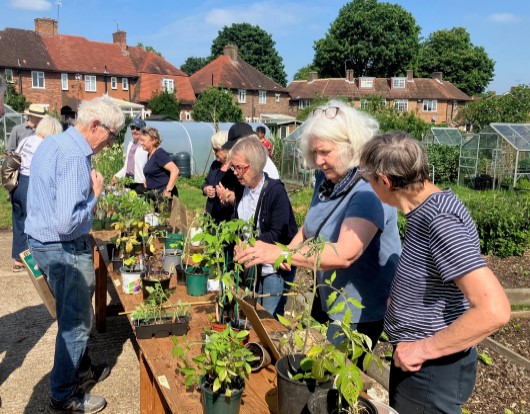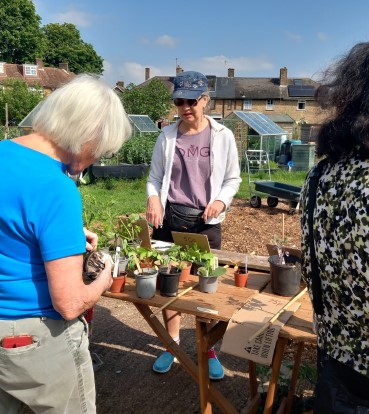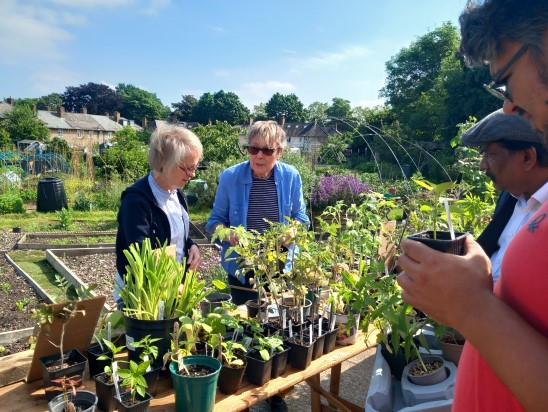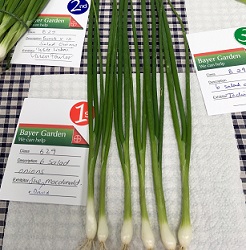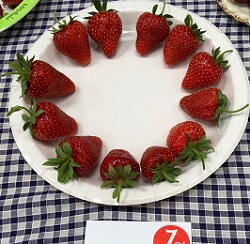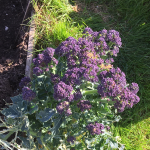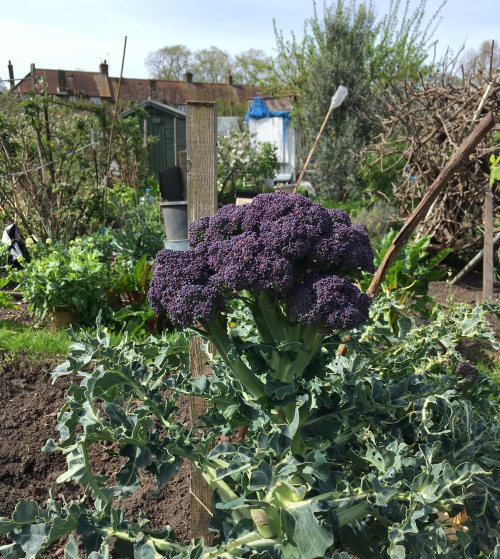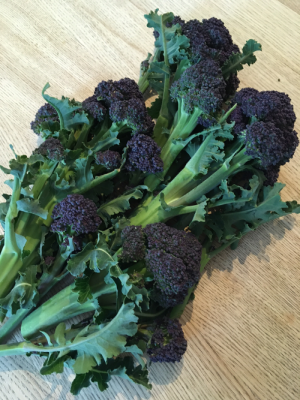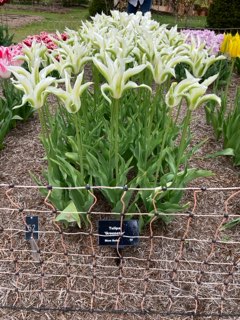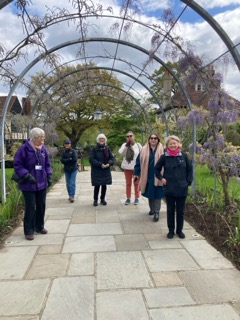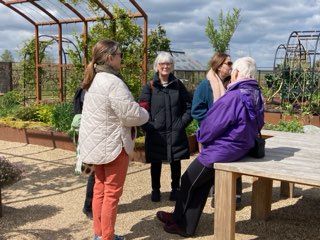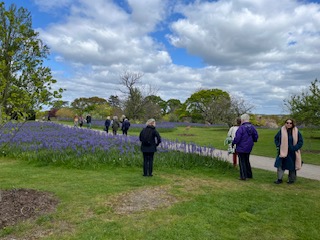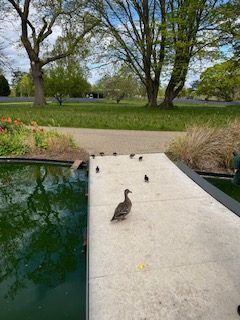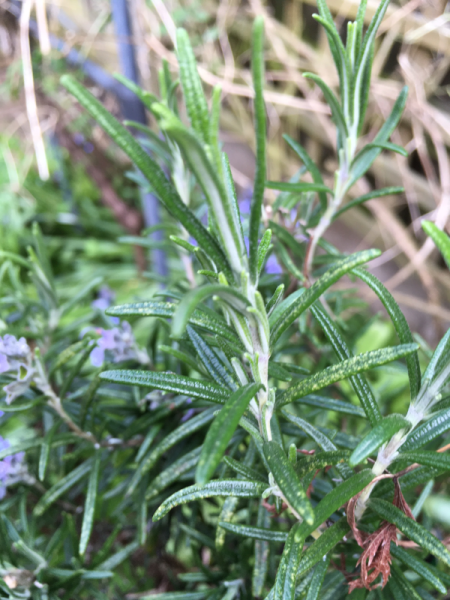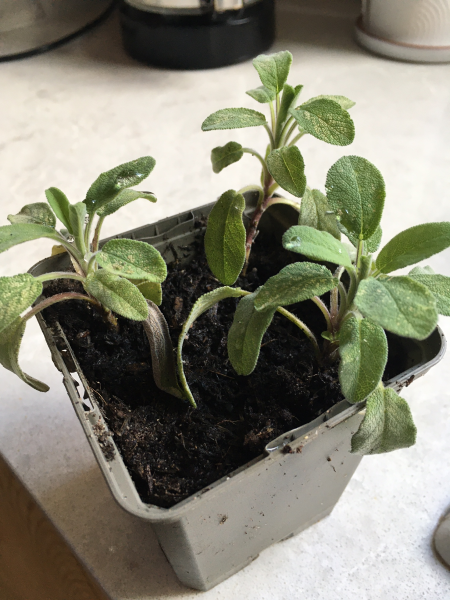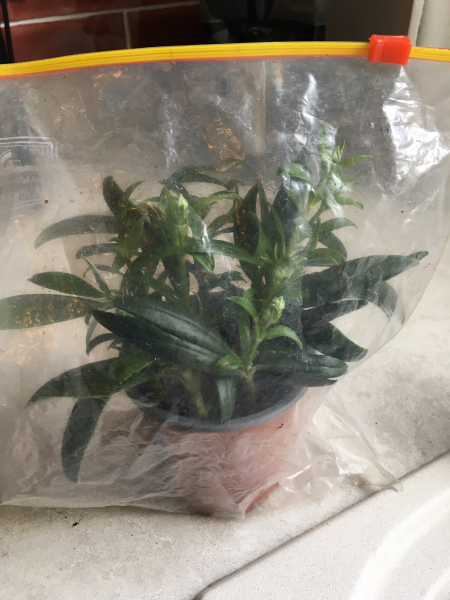In an experiment for the Spinal Injuries Association, who are keen to make gardening easier for those with mobility issues, Bill Young (54A) grew new potatoes (Duke of York) in a series of carboard wine boxes.
This method of growing potatoes within carboard boxes, is common in Australia and some parts of the USA.
Bill writes
It is ideal for wheelchair users, especially in conjunction with raised beds. Just pop the remains of the carboard box off, hey-presto, the new potatoes are in front of you. I lifted the first two plants today Saturday 8th. of June, and was very pleasantly surprised by the results. It was by far the best results I’ve had, nearly 5 lbs. of perfectly formed tubers. This method works, and I can only say – try it!
Method – I folded down the carboard lid, then folded up the bottom, it in effect created a double-walled tube of carboard. Placed the box on top of the soil.
I added three or four inches of soil, then placed two chitting potatoes within the box, then covered with a mixture of compost and soil up to the brim.
I watered them regularly, unfortunately they came under a sustained attack from slugs and snails. My effective remedy was to pick the slugs and snails off the plants, to be fed to the newts within Alberts pond.
The potatoes grew very well, this I believe was due to the insulating properties of the cardboard. It in effect raised the plants off the colder ground. It insulated them from the colder wet soil and also the colder weather of this awful spring.
The result speaks for itself – one excellent crop of new potatoes. It did however make my allotment look rather untidy, that is, until the potato shaw’s softened outlines and then covered the boxes.
